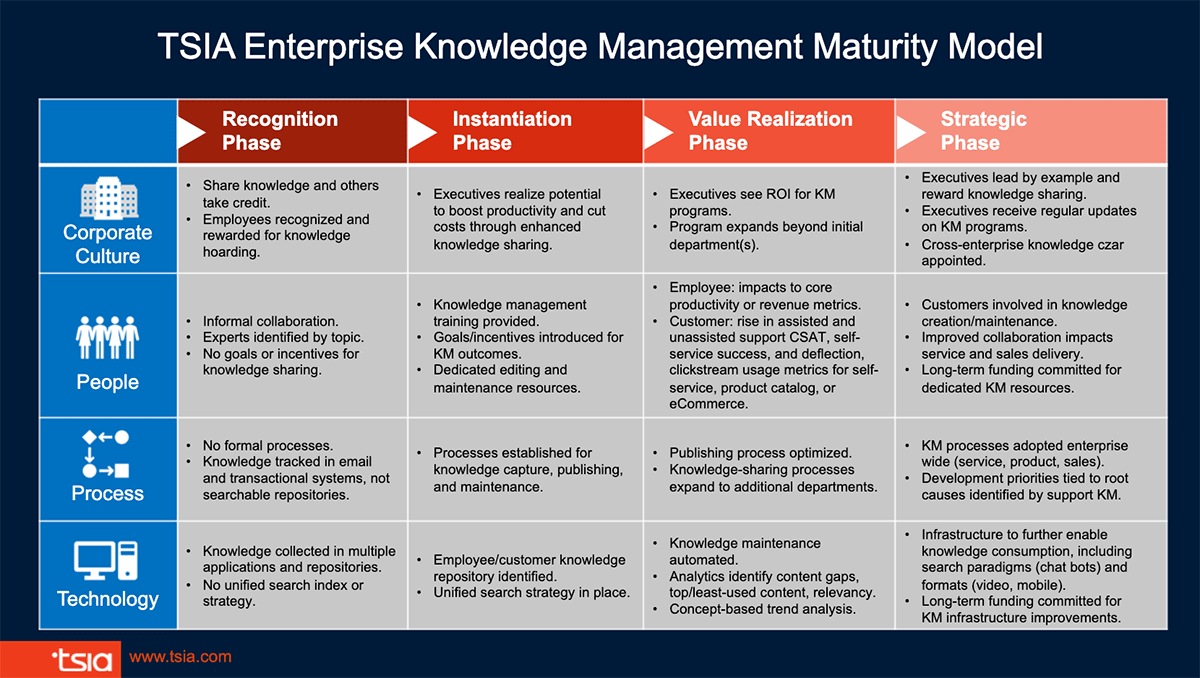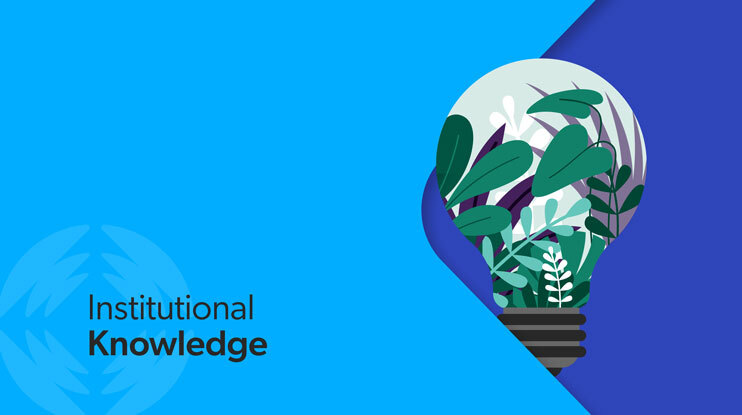Meeting users’ expectations across digital experiences and helping them find what they’re looking for is more complicated than it appears.
Take ecommerce, for example. You’d be right to assume that buyers want personalized shopping experiences. But 56% of Gen Z and nearly 50% of millennials also want to find supporting content that helps them maximize their purchases.

Then again, wanting the info and actually finding it are two different stories. In Coveo’s 2024 EX Industry Report, which surveyed 4,000 workers across the US and UK, 56% of respondents said they struggle to find the valuable information they need to do their work. This challenge is even more pronounced for younger workers, with Gen Z spending an average of 183 minutes per day searching for information, compared to Baby Boomers who spend about 130 minutes per day. Additionally, 34% of employees feel burned out due to inadequate tools, while 30% lack confidence in their work because they can’t find necessary information.
All of which underscores the importance of capturing institutional knowledge, or institutional memory. Across all of these use cases, the institutional knowledge is there — and needed — but somehow locked away in documentation silos that aren’t easily accessed or shared. As a result, customer and employee experience suffer.
Let’s take a look at why this knowledge loss happens, what the consequences are for organizational memory, and how the right knowledge management ecosystem can help.
Relevant reading: 3 Ways GenAI Transforms Employee Experience
What is Institutional Knowledge?
Institutional knowledge is information gained, often over time, through experience.
Work long enough in any environment and you start to learn the ropes. This is how individual knowledge transforms into institutional knowledge, creating valuable insights for the collective enterprise. What you do and don’t say to certain customers, for instance, becomes part of your implicit knowledge. Or what something is actually called in the field, despite what the work instructions actually say, becomes tacit knowledge that a seasoned employee accumulates.
Springer defines institutional knowledge as “a term widely employed in the industry to denote critical knowledge obtained by some senior staff subject matter experts (SME) who have gained deep expertise on types of equipment, a device, or a method.”
Spot on, if you ask me. Rise to the senior ranks in any context and you’re bound to acquire this kind of valuable institutional knowledge. A single manufacturing plant alone might have multiple groups with their own distinct customs and language — all of it institutional or tacit knowledge. Walk into any contact center and you’ll likely find a similar dynamic.
This tacit knowledge differs from explicit knowledge; let’s discuss how.

When Is Existing Institutional Knowledge a Problem?
By its very nature, institutional or tacit knowledge is difficult to capture, retain, find, and use. Effective knowledge capture is challenging because tacit knowledge is typically found in an employee’s head; not the easiest place to tap with a connector or API. As such, much of it remains undocumented, leading to knowledge loss when the employee leaves.
The application of tacit knowledge is known as implicit knowledge. When this occurs, tacit knowledge could also be found in piecemeal places — a random notepad, Word document, or maybe buried in custom code that’s used for handling niche contingencies. All of the above can create some risk and exacerbate the potential for knowledge loss. Improving organizational knowledge retention strategies helps maintain expertise and continuity, mitigating the impact of undocumented tacit knowledge.
For example, are employees using a tacit process that skips a safety or compliance step? Or continuing to process claims without really understanding the logic behind why and how? Without visibility and documentation, this is but one of the ways that existing institutional knowledge can create risks, including:
- Costly process slowdowns and interruptions
- Legal and safety consequences
- Quality control issues
- Employee and customer frustration
In particular, institutional knowledge can inhibit knowledge management.
Take the experienced employees of the highly technical support tier that keeps a OneNote only known to their team. That buried document is replete with technical fixes and workarounds. It represents a knowledge silo filled with valuable insights and explicit knowledge. It’s a common scenario that illustrates how institutional knowledge can become isolated, hindering collaborative learning and broader knowledge sharing.
If the knowledge management team doesn’t know about it, how can they facilitate effective knowledge capture that makes the information available for other people to benefit from? What about the other new employee who might benefit from this valuable knowledge if it were made available in training materials or as part of a comprehensive learning management system?
Another problematic situation is when a seasoned employee retains individual knowledge because they think it increases their value, or proofs them against redundancy. Some companies indirectly reward employees for knowledge hoarding, which can lead to knowledge loss. Doing so makes it difficult for the entire organization to find and use this knowledge, potentially damaging the company culture.
Relevant reading: 9 Signs Your Organization Has a Knowledge Hoarding Problem
How to Expose and Capture Institutional Knowledge
Let’s be clear about one thing: institutional knowledge isn’t some pathogen that needs to be eradicated. Left unchecked, institutional knowledge can certainly wreak some havoc. But with the right strategies in place, you can not only minimize risk, but turn institutional knowledge into an advantage.
In order to make the full use of organizational knowledge, you have to create a knowledge management ecosystem that better captures internal knowledge. The system has to allow employees to quickly internalize knowledge in a way that adds value to their work as well as the organization.
Typically, that effort centers around five knowledge management best practices:
1. Locate, observe, and track the flow of your institutional knowledge
Most organizations already have explicit knowledge and tacit knowledge. These might include the clandestine OneNote mentioned above, a searchable knowledge base, and your employees’ brains. Start by auditing how all of this important knowledge is created, captured, and circulated within your particular organization.
What are the knowledge requirements across the organization? What are people searching for and how? And where are the knowledge silos located? The answers to these questions will help guide strategy for managing institutional knowledge (and reveal a surprising number of gaps).
2. Use artificial intelligence to make the process “smarter”
With respect to siloed and unseen knowledge, many business leaders are turning to AI-powered search for better findability. AI-powered search can overcome many of the challenges inherent to ecosystems with a lot of internal knowledge, such as:
- Unifying structured and unstructured data across multiple systems
- Embedding powerful recommendations within critical workflows
- Enabling secure experimentation and process changes
In large environments with a complex stack of data sources, systems, and platforms, AI can be critical to reducing complexity and connecting the dots.
3. Make knowledge sharing part of the culture
Knowledge hoarding is only natural. But you can reduce info hoarding by minimizing the incentive. Reward knowledge sharing across the board. Create incentive programs for support agents and other employees to capture their valuable knowledge in the flow of work.Finally, consider implementing Knowledge-Centered Service (KCS), an entire methodology built around capturing and sharing knowledge. One company used Coveo to roll out KCS, which eventually allowed tier one support agents to handle 34% more cases.
Relevant reading: Medallia Empowers Tier 1 Agents to Handle 34% More Cases
4. Prioritize your knowledge management program
Knowledge management comes in all shapes and sizes. In terms of evaluating a knowledge management program, the TSIA Enterprise Knowledge Management Maturity Model is a good place to start.

For example, is your culture one in which someone shares knowledge and another takes credit? Or is it that executives lead by example and reward knowledge transfer? Is collaboration informal, or do you have long-term funding committed to knowledge management?
Whatever knowledge management looks like for your organization, it’s increasingly difficult to be a customer-focused organization without a healthy knowledge management program. Prioritizing a knowledge management program means getting a few things right:
- Selecting the right technology (KM platform, search platform, etc.)
- Galvanizing employee buy-in (beyond the knowledge management team)
- Securing buy-in from the leadership teams
5. Use analytics to your advantage
Among many other advantages, analytics can help to identify any knowledge gap. That is, what people — your customers, employees, and so on — are searching for but failing to find. Maybe the content doesn’t yet exist. Or the content could be out of date, inaccurate, or simply not indexed.
These are but a few examples of getting more out of the data that’s already out there. Doing so requires a focused look at who’s using the knowledge and when; what systems are involved; and which of the available data sets really matter.
Seeing the Whole Picture
When it comes to info, it’s all there. At the very least, no organization is without institutional knowledge, and for good reason. There’s not always the necessary time, space, or adequate means to capture the insight and common knowledge that people acquire over time. And the same people acquiring that knowledge often rely on it to do their jobs. Add to this that, increasingly, organizational knowledge is being shared across as many of five generations of people. This represents a huge opportunity to build mentorship programs and foster knowledge sharing among diverse employees.
Collaborative learning across generations can significantly enhance organizational memory and knowledge retention. As Chip Conley, founder of MEA (Modern Elder Academy), notes in Harvard Business Review:
“With five generations in the workplace for the first time, some observers have predicted that battles will break out among the generations. I beg to differ. For years, in my role as the mentor to Airbnb and other start-up founders — and as the CEO of MEA, the world’s first midlife wisdom school — I’ve observed how symbiotic relationships among the generations can develop in ways that take companies to great heights.”
Tackling the institutional knowledge strategy question is about seeing the whole picture. Where is the collective knowledge located? Who has access to it? And who else has line of sight? If there are gaps in the knowledge base, is it because the knowledge doesn’t exist, or because you haven’t tapped into the silos and repositories that have long existed within the organization?
They’re big questions, but the answers might make all the difference.
Dig Deeper
Your digital transformation hinges on institutional knowledge and — by extension — your approach to knowledge management. Neither have to be unsolvable riddles. In our latest ebook, you’ll learn about:
- Accountability for knowledge management
- New perspectives on how to run effective KM
- Where to invest in the right technology


